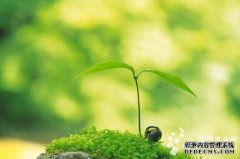Experiment on vegetable supply-side Reform in Sanyuanzhu Village, Shandong Province
"Agricultural supply-side structural reform" has recently become a buzzword, but it seems difficult to connect with a small village that produces cucumbers. However, in recent days, when the reporter went to Sanyuanzhu Village, the birthplace of China's winter-warm vegetable greenhouse, he was surprised to find that a new experiment on the vegetable supply side had been quietly launched here.
"our village has been supplying cucumbers to large supermarket chains in Beijing for more than a decade, and we are the supply side of the capital." Wang Xuejun, an agricultural technician in Sanyuanzhu village, told reporters confidently.
At present, Sanyuanzhu Village mainly grows cucumber and balsam pear, with a total planting area of 850mu, and the annual output of cucumber is expected to reach 17 million jin.
It turns out that since the term supply-side structural reform became popular at the end of last year, Wang Leyi, the village branch secretary of Sanyuanzhu Village, invited experts and scholars to "translate" these new words. "in our village, the purpose of this reform is to grow safe cucumbers that make people who eat vegetables rest assured, and that is what we are doing." Wang Leyi said.
From the beginning of the new cucumber greenhouse planting season since the beginning of winter, Sanyuanzhu Village has implemented an one-vote veto system of substandard pesticide residues. "our village uses the agricultural residue index of green vegetables exported to Japan, and only 5% of them fail at most every year." Wang Baoquan, the village director, said that this standard is much higher than the domestic testing standard. If substandard vegetable samples are found, all vegetables planted by the household will be destroyed and vegetable production will be banned within two years.
Walking into the courtyard of the two village committees, Wang Quanzhou, who is in charge of the sale of vegetables in the village, drove a small agricultural card to the rapid testing room of the vegetable quality of the village committee, and the fresh cucumbers pulled in the car were about to be purchased for the first inspection. "vegetable customers from Beijing and the northeast come directly to the village purchase point to purchase, but only if they pass a quick test and spot check." Wang Quanzhou said.
The rapid detection equipment for agricultural residues in Sanyuanzhu Village has just been updated at a cost of 2 million yuan by the village committee this year, mainly monitoring organophosphorus and ester pesticide residues. The farmer who has just received the training of agricultural residue tester from Weifang Agricultural Bureau is working as a rapid surveyor here. Since the beginning of winter, the agricultural residue inhibition rate of Sanyuanzhu village is less than 50% of the national standard.
Before the purchase of cucumbers, the rotational inspection and testing in the production process was the first local initiative. "starting from the cucumber results in November, we will take vegetable samples from 10 to 20 households every day for agricultural residue inspection. In this way, it will take less than two months to complete the production inspection of 140 households and 220 greenhouses in the village." Introduced by Wang Xuejun.
Finally, the heavily tested cucumbers will get their own QR code production information. This quality traceability QR code can be found in vegetable greenhouses and packing boxes, following vegetables into the hands of consumers. The perfect product traceability system not only better ensures the quality of vegetables, but also makes the vegetables in Sanyuanzhu Village sell at a good price.
Behind the safety of vegetables is the profound change in the organizational structure of agricultural production. Here, the two village committees lead farmers' professional cooperatives and co-ordinate the 850 mu of land of 127 farmers in the way of group leadership, showing the advantages of large-scale production and exploring a close organizational framework. This reform, drawing on the Japanese and Korean farmers' associations, helped turn a loose village into a supply unit with high production standards and strict requirements.
"the main body of intensive, specialized and organized agricultural production is advocated by the supply-side structural reform." Wang Leyi said.
"from the purchase of improved varieties of vegetables, pesticides, chemical fertilizers, farm manure and agricultural machinery, to the testing of agricultural residues and the sale of vegetables, we strictly enforce the standards of the cooperative." Wang Yongliang, a big vegetable grower, is a group leader of the cooperative. He is fully responsible for the quality of the greenhouse of 10 families in the group.
The reason why Sanyuanzhu Village, which locates safe and high-end vegetables, is determined to give up quantity and quality is the market support for excellent food and high price. "my farmers here grow vegetables, they don't ask how much they weigh, they just ask how much." Wang Xuejun told reporters that 2000 jin of cucumbers may not make money. "none of us want to smash the brand of'Le Yi 'vegetables, which is a guarantee for the big guys in our village to make money." Wang Yongliang said.
Du Zhiyong, an associate professor at Qingdao Agricultural University, who cooperates with Sanyuanzhu Village in scientific research and technology all the year round, analyzed, "this experiment is being carried out here to set the standard for the whole process of production for farmers and draw a bottom line." but this strict high-end supply standardization model is still an exception in the country. "
- Prev

The department should be responsible for the "extinction" of false species (figure)
A few days ago, the Ministry of Agriculture released the results of the seed market inspection, giving a hint not to buy these seeds for spring ploughing. 44 kinds of seeds, including rice and corn, were found to be unqualified. Production and management units are distributed in 20 provinces and cities, including Tianjin, Hunan and Guangdong. And
- Next

Zhejiang: the first success of biological seed coating agent (photo)
Recently, a biological seed coating agent which can not only improve the resistance of seeds to diseases and insect pests and greatly increase the yield of crops, but also produce no toxicity and pollution to human and livestock and the environment, has been successfully created and popularized in Zhejiang Province. Seed coating is widely popularized in China in recent years.
Related
- A one-day flower show brings 130 million yuan in orders! Nanhai, this Phalaenopsis exhibition is amazing
- What do the flower language and meaning of Lutheran tree mean? Precautions for planting Lutheran tree
- Encounter Chaoshan Kongfu tea, not without this cup of Phoenix single clump
- The durian market in Vietnam and Thailand is flooded. The price of imported durian has plummeted by 30-40% in a month.
- Shanghai solved the problem of local vegetable supply by planting 80,000 mu of green leafy vegetables.
- Wageningen University has become the best agricultural university in the world for the seventh time in a row.
- The strongest export season of South African grapes is full of challenges, with exports to Russia falling sharply by 21%.
- Sri Lanka is on the verge of bankruptcy, "Tea for debt" Organic Agriculture Revolution aggravates the Food crisis?
- Turning waste into earthworm manure and worm manure into organic fertilizer-A new choice for auxiliary farming
- Organic rice growers shoulder the responsibility of nurturing agricultural talents! Yinchuan Sustainable Farm with Organic Life Camp

